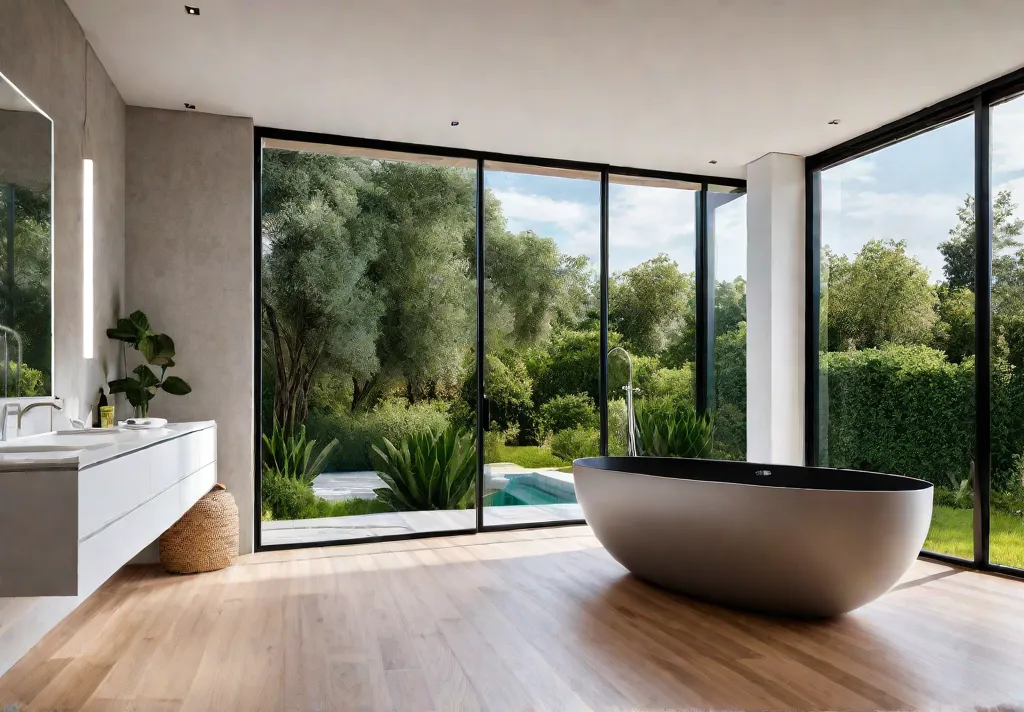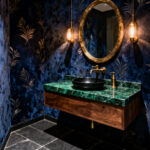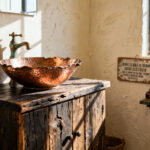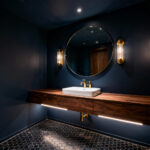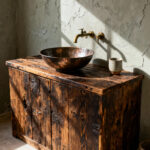As a designer who values sustainability and natural beauty, I’m constantly on the lookout for materials that can transform a space into a true oasis. When it comes to bathroom flooring, the options go far beyond the usual tile or vinyl. From the warm embrace of cork to the industrial edge of concrete, there’s a world of unexpected materials waiting to elevate your bathroom design.
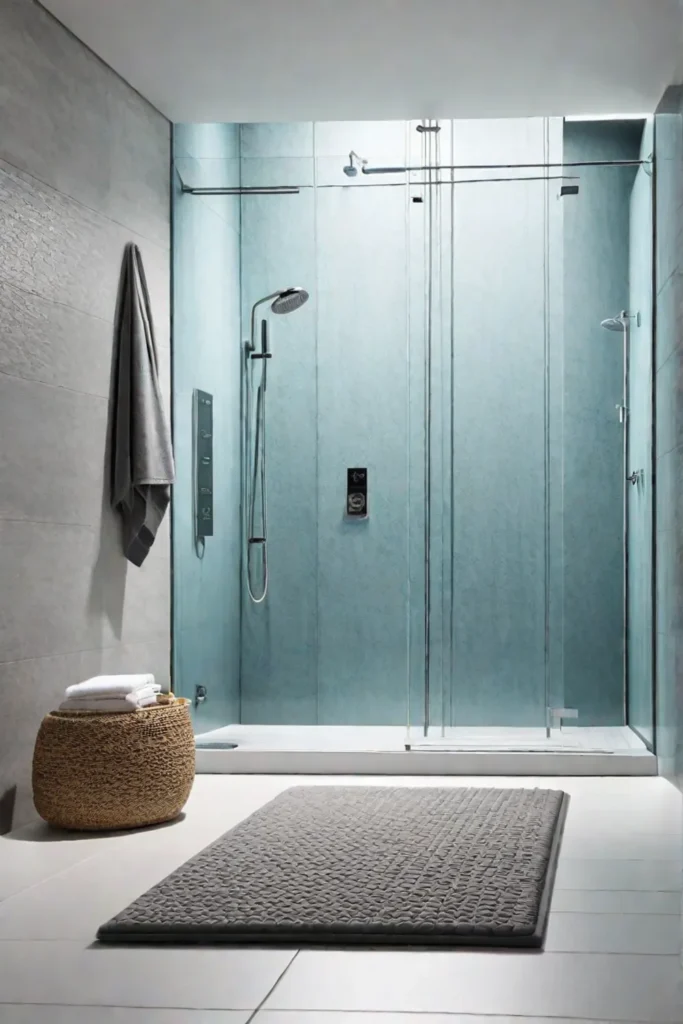
In this article, we’ll explore ten unique flooring choices that combine style, durability, and eco-friendliness. Whether you’re drawn to the tranquility of bamboo or the rustic charm of reclaimed wood, you’ll find inspiration to create a bathroom that’s not only functional but also a true reflection of your aesthetic. Get ready to rethink what’s possible underfoot and discover how the right flooring can transform your bathroom into a sanctuary of relaxation and rejuvenation.
Cork Flooring: The Naturally Chic Choice
As a designer who values sustainability and natural beauty, I’m constantly seeking out materials that align with these principles. Cork flooring is a standout choice that checks all the boxes – it’s eco-friendly, visually stunning, and exceptionally practical for bathrooms.
Cork is harvested from the bark of cork oak trees, a renewable resource that can regenerate its bark after harvesting. This makes cork a truly sustainable material, and one that I love incorporating into my designs. But beyond its eco-credentials, cork flooring offers a range of benefits that make it an excellent choice for bathroom spaces.
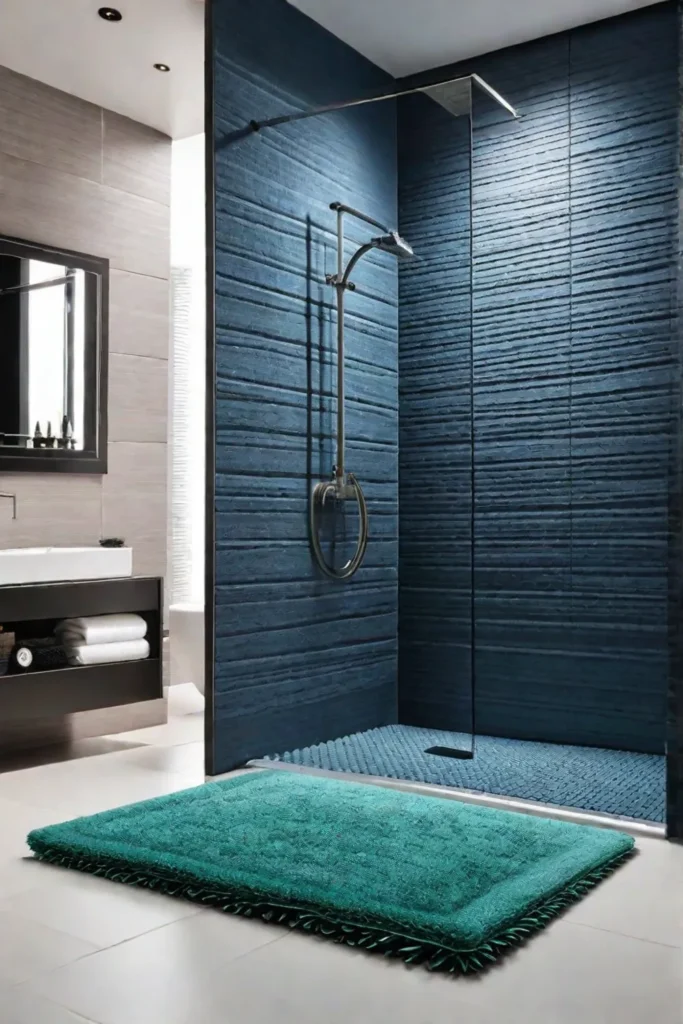
Antimicrobial and Resistant to Mold
One of the most significant advantages of cork flooring is its natural resistance to mold, mildew, and other microbes. This antimicrobial property is especially valuable in bathrooms, where moisture and humidity can create an ideal environment for mold growth. With cork floors, you can enjoy a cleaner, healthier space without the constant worry of mold issues.
Warm and Comfortable Underfoot
Cork is a fantastic insulator, which means it retains warmth and provides a cozy, comfortable surface for your feet. This is a welcome feature in bathrooms, where cold tiles can make for an unpleasant experience, especially during the colder months. Cork’s natural warmth creates a spa-like atmosphere, enhancing the overall comfort and relaxation of your bathroom.
Naturally Water-Resistant
While cork is not waterproof, it is naturally water-resistant when properly sealed. This makes it an excellent choice for bathroom floors, where spills and splashes are common. With the right sealant, cork floors can withstand moisture without warping or deteriorating, ensuring long-lasting durability and beauty.

Installation and Sealing
When it comes to installing cork flooring in bathrooms, proper sealing is crucial. There are several sealant options available, including polyurethane, acrylic, and wax-based sealants. Each option has its pros and cons, so it’s essential to consult with a professional to determine the best choice for your specific needs.
Styling Cork Floors in Bathrooms
Cork flooring offers a warm, natural aesthetic that complements a wide range of design styles. For a modern, minimalist look, consider larger cork tiles in a neutral shade. Pair them with light, airy colors and natural elements like wood and stone for a spa-like ambiance.
If you’re seeking a more unique touch, explore cork tiles with geometric patterns or intricate designs. These can add visual interest and depth to your bathroom while maintaining the natural charm of the material.
- Use larger cork tiles for a more modern look
- Pair cork flooring with light, airy colors for a spa-like feel
- Consider cork tiles with geometric patterns for a unique touch
In terms of cost, cork flooring is generally more affordable than hardwood or high-end tile options, making it a budget-friendly choice for those seeking a luxurious look without breaking the bank.
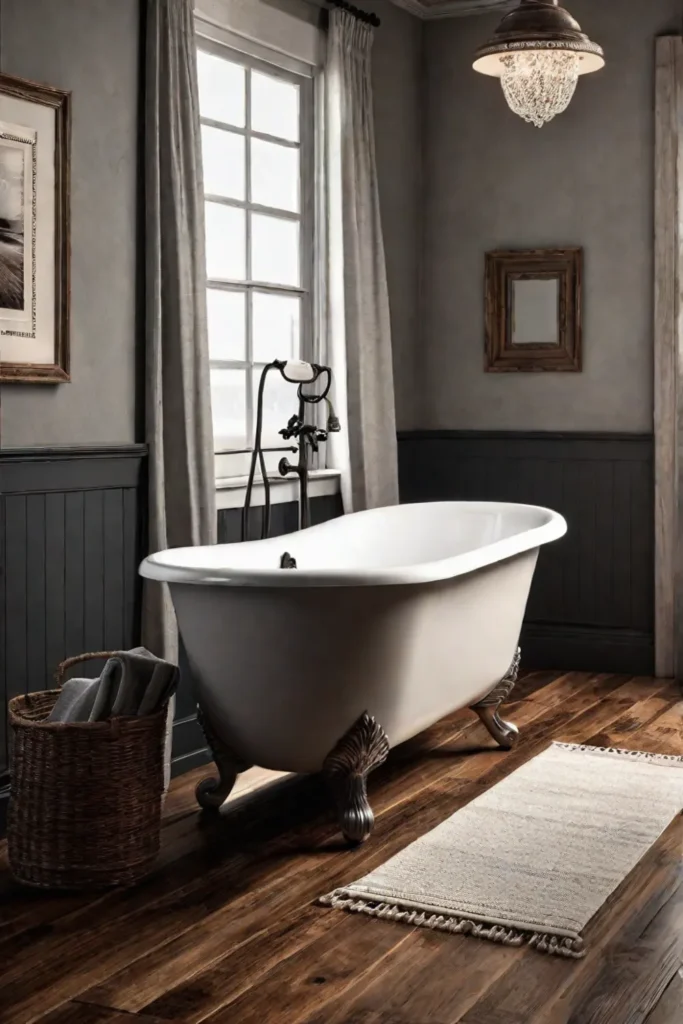
Cork is a stylish, durable, and sustainable option for bathroom flooring that offers a range of practical benefits. With proper sealing and care, cork floors can withstand the moisture and humidity of bathroom environments while providing a warm, comfortable, and visually appealing surface underfoot. Embrace the natural beauty and eco-friendliness of cork in your next bathroom design for a space that is both stunning and mindful.
Bamboo: Bringing Zen to Your Bathroom
As a designer deeply connected to nature, I often turn to natural materials like bamboo to create tranquil and sustainable spaces. In the bathroom, bamboo flooring offers a unique blend of beauty, durability, and eco-friendliness that aligns perfectly with my design philosophy.
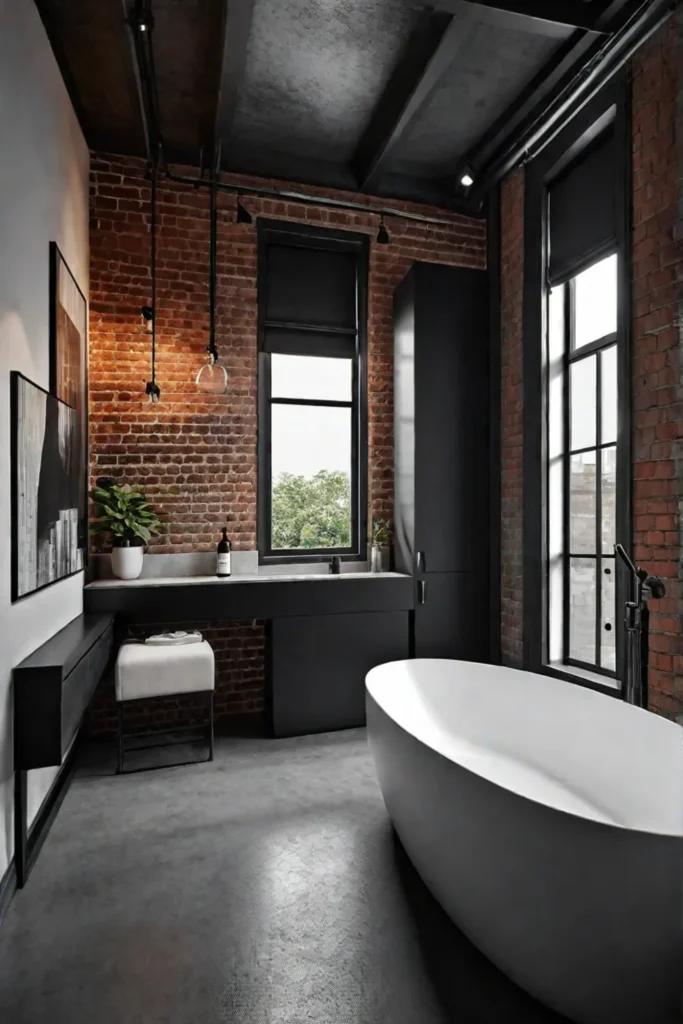
Types of Bamboo Flooring for Bathrooms
Bamboo flooring comes in two main varieties: solid and engineered. Solid bamboo planks are crafted from a single piece of bamboo, while engineered bamboo features a bamboo veneer atop a plywood or high-density fiberboard core. Both options work well in bathrooms, but engineered bamboo is generally more stable and resistant to moisture.
You’ll also find bamboo flooring in a range of colors and grain patterns, from light and airy to deep and rich. I often recommend darker shades for bathroom floors, as they do a better job of concealing watermarks and wear over time.
- Horizontal grain: A contemporary look with sleek, parallel lines
- Vertical grain: A more traditional aesthetic with a subtle, linear pattern
- Strand woven: An ultra-durable option made by compressing bamboo strands under intense heat and pressure
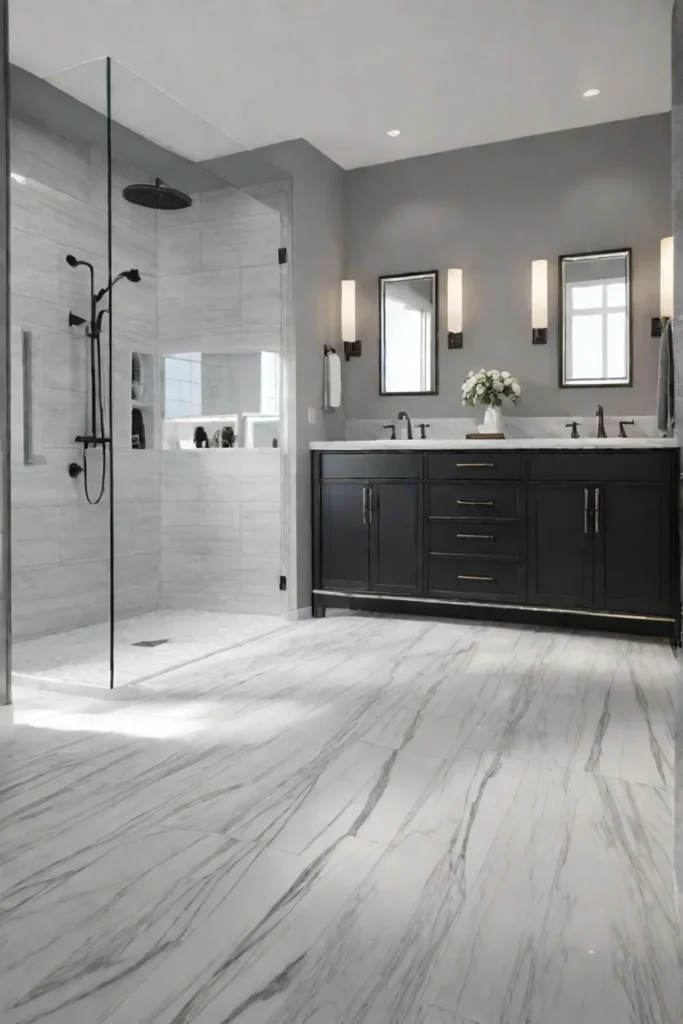
Maintaining Your Bamboo Bathroom Floor
While bamboo is naturally moisture-resistant, proper care is essential to keep your bathroom floor looking its best. Here are a few tips:
- Ensure adequate ventilation to prevent excess moisture buildup
- Use bamboo mats or rugs outside showers and tubs to prevent slipping
- Clean spills promptly and avoid harsh cleaning products
- Refinish or recoat the surface every few years to maintain its luster
One of the most common questions I get is about the hardness of bamboo flooring compared to hardwoods. The truth is, that strand woven bamboo is one of the hardest natural flooring materials available, even harder than oak or maple. This makes it an excellent choice for high-traffic areas like bathrooms.

Unlike engineered and solid bamboo flooring, where the material is cut into planks, strand woven bamboo is made by compressing bamboo strands under intense heat and pressure, creating an incredibly dense and durable surface.
As you consider flooring options for your bathroom, remember that bamboo offers a unique combination of natural beauty, sustainability, and durability. With proper care and maintenance, this renewable resource can bring a sense of tranquility and harmony to your space for years to come.
Luxury Vinyl Tile: High Style, Low Maintenance
Luxury vinyl tile (LVT) is the chameleon of bathroom flooring, offering a versatile blend of style and practicality that’s hard to beat. As a designer, I’ve embraced LVT for its ability to mimic the look of natural materials like wood and stone, while providing a water-resistant, low-maintenance surface that’s perfect for the high-humidity environment of a bathroom.

Choosing the Right LVT for Your Bathroom
With so many options on the market, selecting the right LVT can feel overwhelming. But fear not, my design-savvy friends! The key is to consider both aesthetics and performance. For bathrooms, I recommend choosing LVT with a thick wear layer and a rigid core, which will enhance durability and resistance to dents and scratches.
When it comes to looks, the possibilities are endless:
- Realistic wood-look planks in a variety of shades and grains
- Sleek stone-look tiles in marble, slate, or travertine finishes
- Bold patterns and colors for a more contemporary vibe
Installing LVT: DIY or Hire a Pro?
One of the beauties of LVT is its DIY-friendly installation. Many products feature a click-and-lock system, allowing you to tackle the project yourself with relative ease. However, for larger spaces or intricate layouts, I recommend hiring a professional installer to ensure a flawless, long-lasting result.
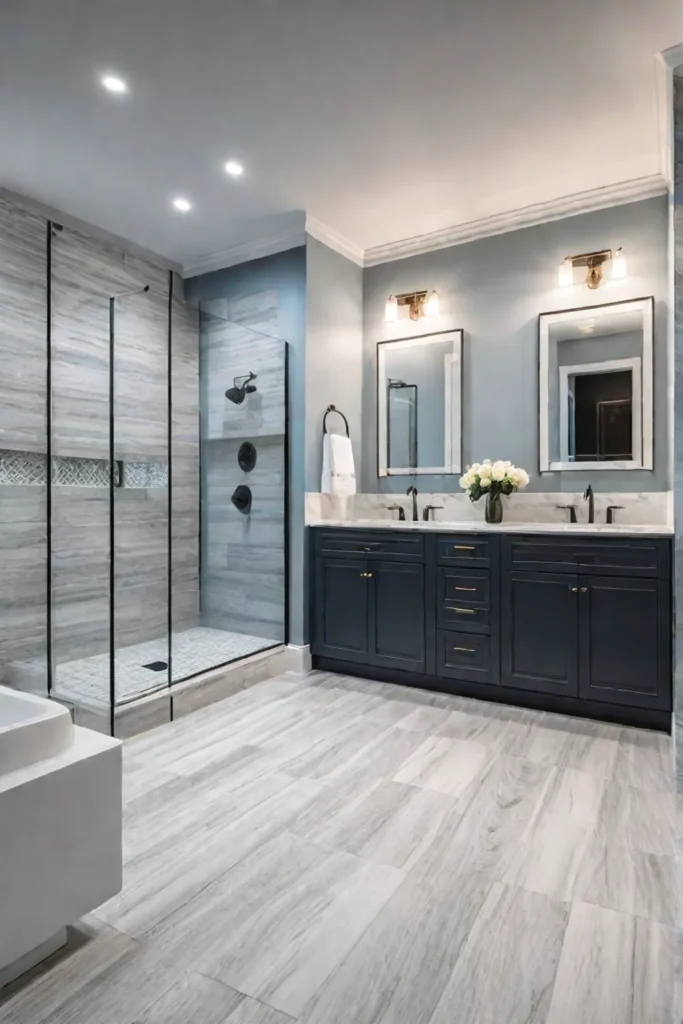
Interesting Facts:
- LVT can be installed directly over existing flooring, making it a fantastic option for renovations.
- Advancements in printing technology have allowed LVT to mimic natural materials with incredible realism, fooling even the most discerning eye.
Practical Tips:
- Use LVT to create a seamless look between your bathroom and adjacent rooms, creating a cohesive flow throughout your living space.
- Incorporate decorative borders or patterns with LVT tiles to add visual interest and define separate zones within the bathroom.
- Consider LVT with textured surfaces for enhanced slip resistance, especially in wet areas around the shower or tub.
Key Differences Between LVT and Sheet Vinyl:
While both are water-resistant and budget-friendly, LVT offers a more realistic look and feel compared to traditional sheet vinyl. LVT is also more durable and easier to replace if a section becomes damaged.
How Does the Durability of LVT Compare to Ceramic Tile?
LVT may not be as hard-wearing as ceramic tile, but it’s a close second. With proper care and maintenance, high-quality LVT can withstand heavy foot traffic and moisture exposure for years, making it a practical choice for busy households.

Key Takeaways:
- LVT offers a versatile and budget-friendly flooring option for achieving a high-end look in the bathroom.
- Proper installation is crucial for the longevity and performance of LVT flooring.
With its stylish appeal and low-maintenance benefits, LVT is a top contender for creating a bathroom that’s both beautiful and functional. But if you’re looking for a more industrial-chic vibe, the next section explores the unexpected warmth and character of concrete flooring.
Concrete: Industrial Chic Underfoot
Concrete flooring might not be the first thing that comes to mind when designing a bathroom, but trust me, this industrial material can bring a serious dose of cool to your space. Don’t let its utilitarian origins fool you – concrete is incredibly versatile and can be transformed into a stunning, modern feature.
Different Concrete Finishes for Bathrooms
One of the best things about concrete is the range of finishes you can achieve. From sleek and polished to textured and rustic, the possibilities are endless:
- Polished Concrete: This high-gloss finish creates a luxurious, reflective surface that’s perfect for a contemporary bathroom. It’s also incredibly durable and easy to clean.
- Stained Concrete: Add depth and character by staining your concrete floor in shades like rich charcoal or warm terracotta. The stain penetrates the surface, ensuring long-lasting color.
- Stamped Concrete: For a unique, textured look, consider stamped concrete. This technique imprints patterns like wood grain or stone into the surface, adding visual interest and slip resistance.
- Exposed Aggregate: By exposing the decorative aggregates (like pebbles or glass) mixed into the concrete, you can create a one-of-a-kind, artistic floor that’s sure to be a conversation starter.
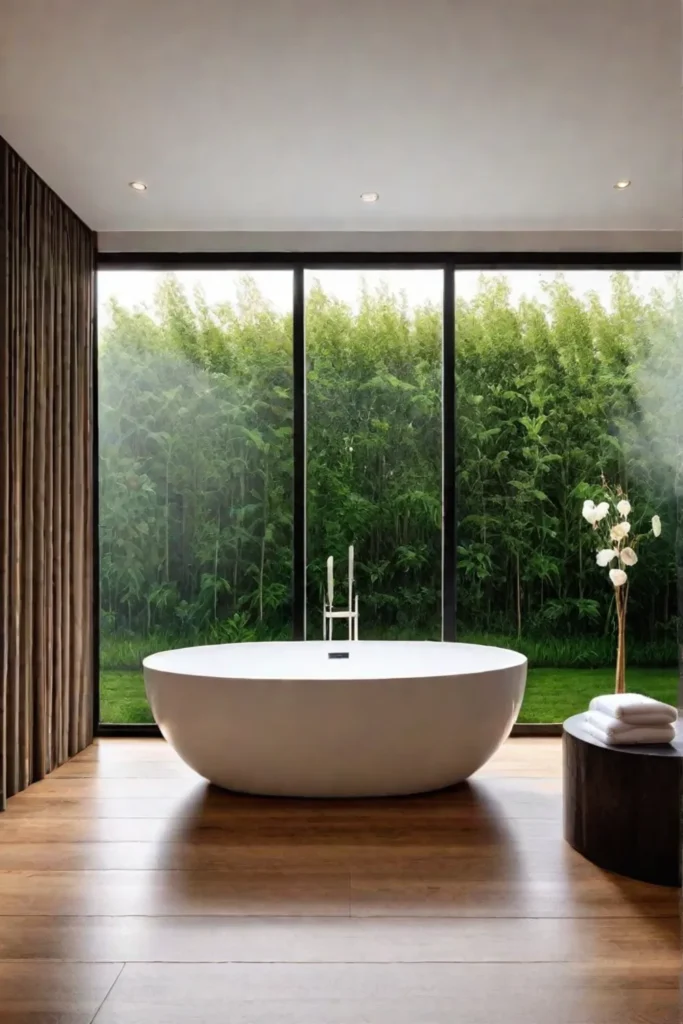
Radiant Heating: Your Feet Will Thank You
One of the best things about concrete floors is their compatibility with radiant heating systems. Imagine stepping onto a warm, cozy floor on a chilly morning – pure bliss! Radiant heating not only adds comfort but can also save you money on energy bills in the long run.
Pros and Cons of Sealed vs. Unsealed Concrete
When it comes to concrete floors in bathrooms, sealing is essential. A properly sealed concrete floor will resist moisture, staining, and damage, making it a practical choice for this high-humidity space. However, unsealed concrete can be more slippery when wet and may require more frequent cleaning and maintenance.
Cost of Installing Concrete Floors
The cost of installing concrete floors can vary depending on the size of your bathroom, the finish you choose, and whether you opt for radiant heating. On average, you can expect to pay anywhere from $5 to $15 per square foot for a basic concrete floor installation. More intricate finishes like polishing or stamping will increase the cost, but the durability and style of concrete make it a worthwhile investment.
Concrete flooring offers a durable and stylish option for homeowners seeking a contemporary bathroom aesthetic. With proper sealing and regular maintenance, it can be a striking and long-lasting choice that adds an industrial edge to your space. Pair it with exposed brick walls for an urban loft vibe, or warm it up with colorful rugs and textiles for a more eclectic look. And don’t forget – a concrete vanity top can complete the look and tie the whole room together.
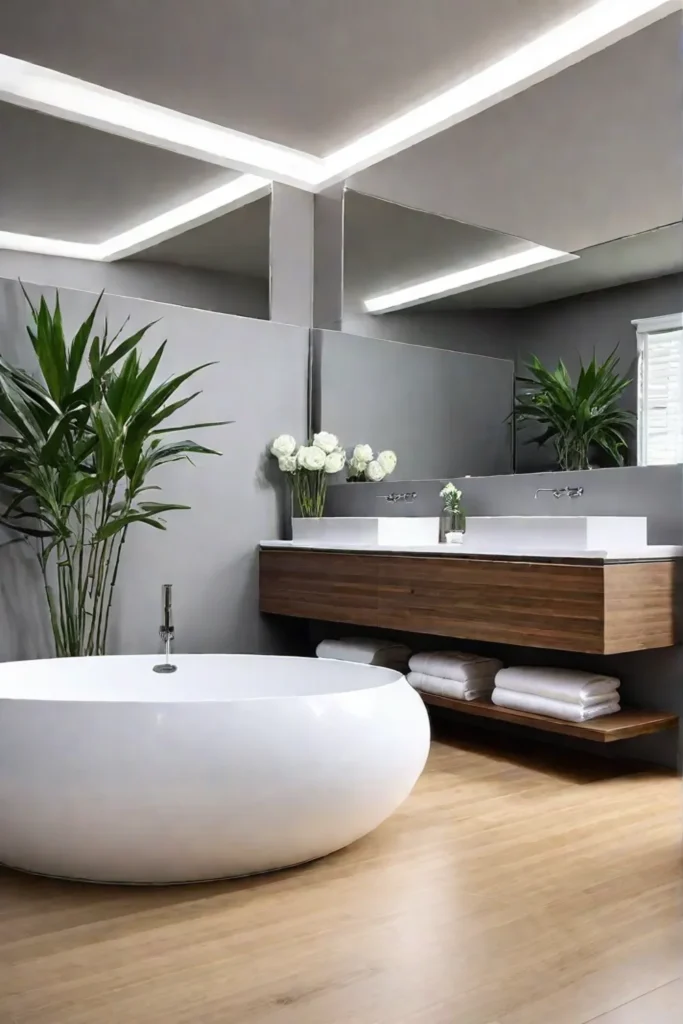
Beyond the Basics: More Unexpected Bathroom Flooring Ideas
When it comes to bathroom floors, most people automatically think of classic tile or vinyl options. But why settle for the ordinary when you can create a truly unique and personalized space? As a designer, I’m always encouraging my clients to think outside the box and explore unconventional materials that can elevate their bathrooms from ordinary to extraordinary.
Reclaimed Wood: Rustic Charm Meets Modern Design
One of my favorite unexpected flooring choices for bathrooms is reclaimed wood. These planks, often sourced from old barns, factories, or even bowling alleys, bring a warm, rustic charm that instantly adds character and depth to any space. Imagine stepping onto a richly textured wood floor, with its natural knots and grains telling a story of history and resilience.
While reclaimed wood may seem like an unconventional choice for a humid environment like a bathroom, with proper sealing and maintenance, it can be a stunning and long-lasting option. To create a truly unique accent, consider using reclaimed wood planks to craft a stunning feature wall, blending the warmth of natural materials with the sleek lines of modern design.
- Use a moisture-resistant sealant to protect the wood from humidity and water damage.
- Consider installing radiant heating beneath the wood flooring for added warmth and comfort.
- Mix and match different wood tones and textures for a truly one-of-a-kind look.
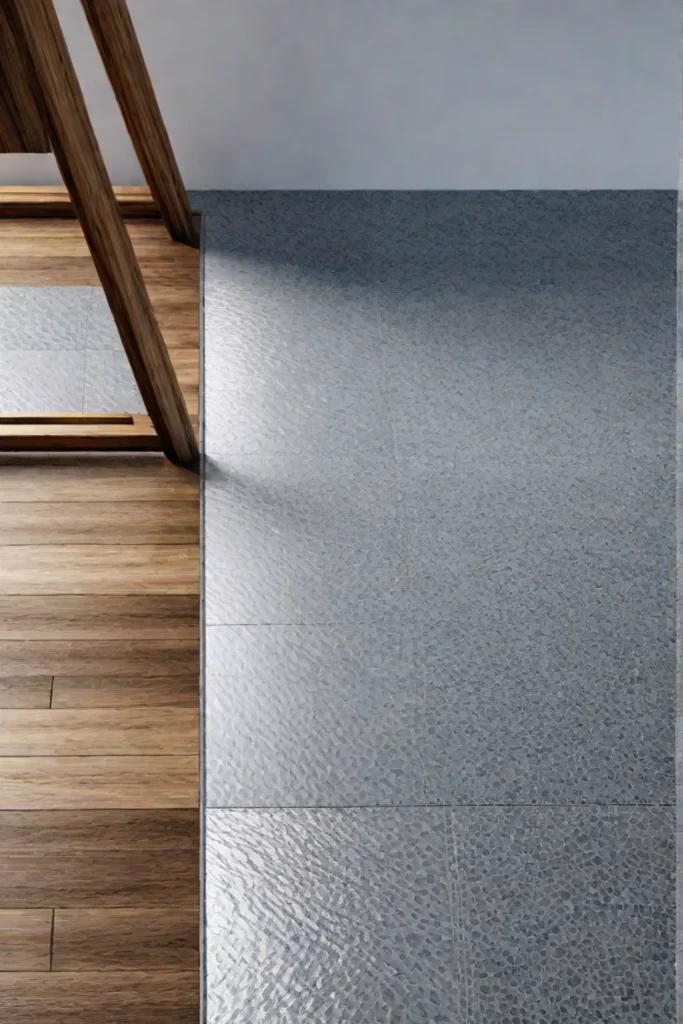
Rubber Flooring: Surprisingly Stylish and Sustainable
Another unexpected material that has caught my eye is rubber flooring. Don’t let the name fool you – this versatile option can be both stylish and sustainable. Rubber flooring is naturally antimicrobial, hypoallergenic, and incredibly durable, making it an excellent choice for high-traffic areas like bathrooms.
- Opt for rubber flooring tiles in bold colors or patterns for a playful, modern touch.
- Consider textured or patterned rubber floors to add visual interest and slip resistance.
- Explore different finishes, from matte to glossy, to complement your bathroom’s overall aesthetic.
One of the best things about rubber flooring is its versatility. You can mix and match different materials to define zones within your bathroom, creating a seamless flow between the vanity area, shower, and toilet. For example, pair rubber flooring with natural stone or tile in the shower for a cohesive yet visually interesting design.
As a designer, I’m always encouraging my clients to embrace their creativity and push boundaries. Don’t be afraid to explore unconventional materials like reclaimed wood or rubber flooring – with proper planning and research, you can create a bathroom that’s not only stylish but also functional and sustainable.
Final Thoughts
As you embark on your bathroom design journey, remember that the floor is a canvas waiting to be transformed. Don’t be afraid to step outside the conventional and embrace unconventional materials that speak to your style and values. Whether you opt for the natural warmth of cork, the zen-like serenity of bamboo, or the industrial chic of concrete, the possibilities are endless.
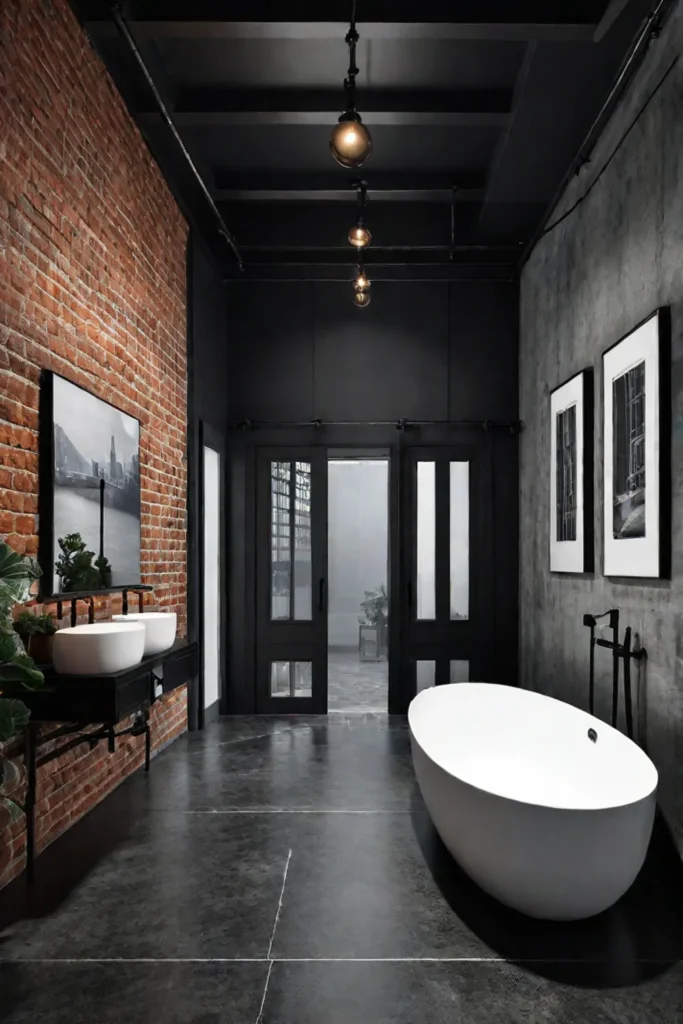
But beyond aesthetics, consider the environmental impact of your choices. By selecting sustainable options like reclaimed wood or eco-friendly rubber flooring, you can create a space that not only looks stunning but also aligns with your commitment to mindful living.
So go ahead, let your creativity flow, and design a bathroom that truly reflects your unique personality and values. After all, your home should be a sanctuary – a place where you can unwind, recharge, and find harmony with the natural world around you. With the right flooring underfoot, you’ll be one step closer to creating a space that inspires and uplifts you every single day.
